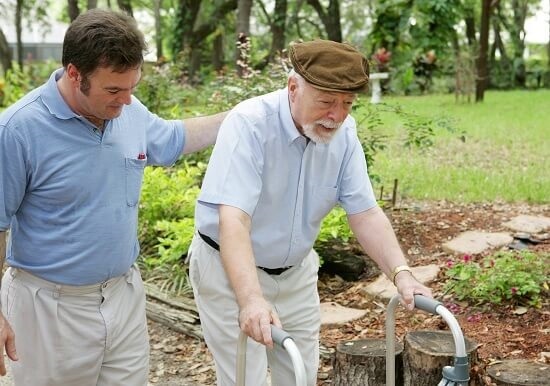As you begin to age, it is very important to start thinking about what types of services and care are required to stay active, safe and healthy. It is no secret that the older you get, the more difficult activities are to perform. The goal, after all, is to remain as independent as possible so you can continue about your life. The problem is that accomplishing this goal can be unclear and confusing with so many different options to choose from, especially if deciding on care is a new experience for you. In the following article we will summarize the three most common levels of care in the senior healthcare industry, most commonly known as retirement living, assisted living and skilled nursing.
Lowest Level of Care
What does it mean when a senior citizen lives independently? It could mean they are living in the comfort of their own home or it could mean they are living in a retirement home with other people their age. Both are good options, and both provide nearly the same level of service, though there are some differences which will be explained shortly. In either case, the main point is that when a senior lives independently they are living without any kind of assistance. Many people have the misconception that by moving into a retirement home they will be receiving increased care and help. Yes, typically there are social activities and recreational dining, but if assistance is required such as dressing, grooming, feeding, bathing, and going to the bathroom, or if medical attention is called for, then a higher level of care is going to be needed.
There are virtues to both living at home and in a retirement community, so it is important to decide what is best for you or a loved one. Living at home has the benefit of retaining a familiar and comfortable setting, while moving into a retirement home guarantees a social community with people of the same age, and therefore, removes the risk of social isolation. The decision really comes down to comfort and style of living.
Mid-Level of Care
One of the hardest realities to accept is when you or a loved one cannot perform everyday tasks that used to be instinctual and trivial, like doing laundry or cooking dinner. At this point we’re not referring to medical or rehabilitative care, but rather only to assistance with activities of daily living (ADL’s). When this incapacity becomes a norm, it is time to raise the level of care.
If you or a loved one is living independently and help can be performed without having to relocate, then deciding to hire a non-medical homecare provider is going to be your best option. On the other hand, when living alone becomes unsafe then it is probably best to relocate into an assisted living facility. Assisted living facilities are designed specifically to cater to the needs of those who require assistance with ADL’s. Transitioning from independent living to assisted living is a very natural progression, so do not be ashamed if this is happening to you. Think of assisted living simply as living in a retirement home, but with many of your everyday tasks like cooking and cleaning done for you, as well as a 24-hour staff member on-call in case of emergencies. The biggest misconception about assisted living is that you will receive medical and rehabilitation services, which often leaves those who move into an assisted living facility disappointed, as they expect that these services are going to be provided.
Highest Level of Care
What if your loved one needs medical care or rehabilitation services? As expected, these situations are always going to be more complicated than those that do not require medical attention. Deciding on how to treat a person’s instability from preventing another fall is naturally more sensitive, complicated and emotionally taxing than deciding if they need help cooking dinner or grooming. The big question is where do you start?
First off, you should always ask yourself whether the situation can be resolved without having to remove the individual from the comfort of their own home. If you can hire a medical home health agency to come in and provide assistance then it is usually your best option.
But what if the situation is more serious and cannot be treated at home? The first step is to assess the degree of the problem. If the individual needs to go the hospital, then call 911 immediately, even if you are unsure if it is the right thing to do. When you are working with elderly individuals, certain situations can be unpredictable; therefore, getting them to the hospital is usually the safest route. If the individual needs rehabilitation care, then determining if they need short-term or long-term rehabilitation is pertinent. If short-term rehabilitation (sub-acute care) is required, then the patient will need to temporarily move into a nursing home or sub-acute rehabilitation facility. The key is to get them in and out of rehabilitation as quickly as possible, so they can return home. If the individual requires long-term rehabilitation then they will probably need to move into a nursing home, or skilled nursing facility, on a full-time basis in order to receive the appropriate ongoing and daily medical attention.
To Sum it all Upds
Deciding on what level of care you or a loved one needs is a very serious matter. It is very common for seniors to transition from one level of care to another based off what is required to keep them healthy, active and safe. It is important to be educated as much as possible, so you are better prepared to make sensible adjustments and informed decisions in unexpected situations. Not only will you be more at ease, but you will save time and money in the process.
Published by Alex Milzer with Senior Directory on April 1st, 2014


Comments